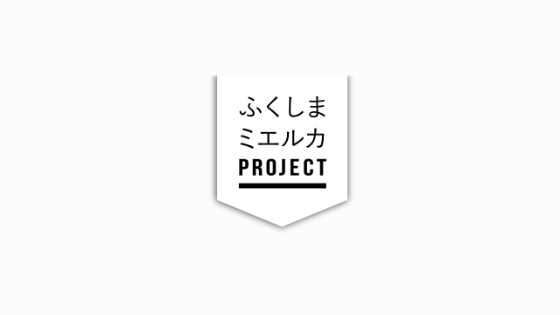Since 1993, a nuclear fuel reprocessing plant has been under construction in the village of Rokkasho in Aomori Prefecture, along the Pacific coast of northern Japan. It is supposed to extract uranium and plutonium from spent fuel from nuclear power plants. The operator is Japan Nuclear Fuel Ltd.
On July 29, 2020, the Nuclear Regulation Authority approved alterations to the reprocessing plant, required in the wake of the 2011 Fukushima nuclear accident. During reprocessing, spent fuel bundles are disassembled and dissolved in nitric acid to recover the plutonium and uranium. The process produces a high-level liquid radioactive waste that is hazardous to humans.
The radioactive high level waste is mixed with glass and supposed to be solidified in glass, but the vitrified canisters emit intense radiation, with initial surface temperatures exceeding 200 degrees Celsius. The canisters must thus be cooled for 30 to 50 years in special storage facilities, after which they are to be hauled away for permanent disposal more than 300 meters underground. However, no candidate site for final disposal in Japan has yet been decided.
Construction timeline pushed back 25 times, radioactive high level waste leaks, vitrification failures
Construction of the Rokkasho reprocessing plant began in 1993 and it was originally scheduled for completion in 1997, but the schedule has already been pushed back 25 times. The original construction cost of about 760 billion yen has bloated fourfold to 2.9 trillion yen (US$27 billion). The total project costs, including operating costs and decommissioning, come to an estimated 13.9 trillion yen (US$130 billion). These costs are to be paid by our electricity bills.
During active tests of operations between 2006 and 2008, the project was plagued with accidents and problems. In one incident there was a leak of 149 liters of high-level liquid radioactive waste. Separately, in the vitrification process, platinum group elements accumulated at the bottom of the vitrification furnace, blocking an outlet, leading to failure. Other problems also arose including a mixing rod bending and being difficult to remove, and a tile falling from the furnace ceiling. In the end, vitrification attempts failed, leaving behind a dangerous situation today with high-level liquid radioactive waste. The NRA’s review did not consider the recurring problems and failures with vitrification.

Huge radiation releases into the environment, no regulation of concentrations
If the reprocessing plant starts operating, enormous amounts of radioactive materials will be released to the atmosphere and ocean. According to information published by Japan Nuclear Fuel Ltd. about monthly releases, tritium releases in October 2007 during active testing amounted to an average concentration of about 90 million Bq/L. This is 1,500 times the concentration limit of 60,000 Bq/L that applies to nuclear power plants.
Japan’s Act on the Regulation of Nuclear Source Material, Nuclear Fuel Material and Reactors establishes maximum concentrations for each radionuclide in water released from nuclear power plants, and stipulates that the total shall not exceed 1. However, this limit does not apply to discharge into seawater from nuclear fuel reprocessing facilities. In other words, if nuclear fuel reprocessing facilities had to comply with the same limits as nuclear power plants, the Rokkasho facility would not be able to operate.
Nowhere to dispose of spent MOX fuel
Uranium and plutonium extracted from reprocessing is fabricated into MOX fuel (combined fuel containing plutonium and uranium), which is supposed to be used only in special nuclear reactors. However, as things currently stand, MOX fuel cannot currently be fabricated in Japan because the fuel cycle is broken.
Also, there are only five reactors in Japan that can use MOX fuel, including Unit 3 at the Genkai nuclear plant in Saga Prefecture. To use the all the MOX fuel and avoid an increase in surplus plutonium, 16 to 18 reactors would be needed. On top of that, no facilities exist to dispose of spent MOX fuel.
Even for regular spent uranium fuel, it is necessary to cool the fuel in pools for 15 years before it can be moved to dry storage. Spent MOX fuel still has a high level of thermal energy, requiring over 100 years before the heat falls to a level that permits being transported.
Collapse of nuclear fuel cycle, concerns about plutonium stockpiles
Surplus amounts of plutonium increase the risk of being used in nuclear weapons, and this has attracted concern from the international community, particularly United States. Japan’s stockpile is now about 46 tons. This is over ten times more than China’s reported military stockpile of plutonium, and equivalent to several thousand nuclear weapons.[1]

The nuclear fuel cycle has been promoted as the basis of Japan’s nuclear energy policy. But the cycle has already collapsed. The Monju fast-breeder reactor (Tsuruga, Fukui Prefecture) was supposed to play a central role in the fuel cycle, but it has been a complete failure.
Monju was supposed to be a “dream reactor” that consumed plutonium but also generated more plutonium than it consumed. However, during the course of twenty years in which it could have been operating, it was only able to operate for 250 days due to a series of accidents and incidents. In 1995 after a sodium leak and fire, an information cover-up was discovered. It was only about three months after the long-awaited trial operation restarted that on August 16, 2010, fuel handling equipment dropped inside the reactor, causing operations to be halted once again. In December 2016 the decision was made to decommission Monju. Not once did it generate its rated output.
More than a trillion yen (US$9 billion) of public funds have been poured into Monju alone. Its decommissioning is expected to cost 375 billion yen (US$3.5 billion).
Despite huge contradictions and risks, the government of Japan continues to promote its nuclear reprocessing policies. Who will pay the price for all this? The current and future generations of Japan.
(Fukushima Today and Japan’s Energy Future 2021)
[1] The Asahi Shimbun Globe+, “The world is suspicious of Japan’s huge plutonium stockpile” (September 7, 2019) (in Japanese).

